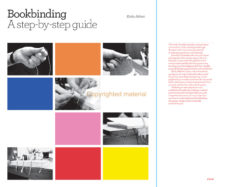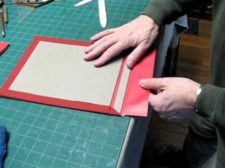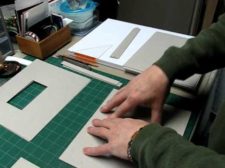Collating, Book Plates, Maps and Interleaving
In a great measure, the whole beauty of the inside work rests in properly collating the book, in guarding maps, and in placing the plates. When pasting in any single leaves or plates, a piece of waste paper should always be placed on the leaf or plate the required distance from the edge to be pasted, so that the leaf is pasted straight. It takes no longer to lay the plate down upon the edge of a board with paper on the plate, than it does to hold the plate in the left hand, and apply the paste with the right hand middle finder; by the former method a proper amount of paste is deposited evenly on the plate and it is pasted in straight line; by the latter method, it is pasted in some places thickly, and in some places none at all. I have often seen books with the plates fastened to the book nearly half way up to its foredge, and thus spoit, only through the slovenly way of pasting. After having placed th plates, the collator should go through them again when dry, to see if they adhere properly, and break or fold them over up to the pasting, with a folding stick, so that they will lie flat when the book is open. I must again call attention to colored plates. They should be looked to during the whole of binding, especially after pressing. The amount of gum that is put on the surface, which is very easily seen by the gloss, causes them to stick to the letter-press: should they so stick, do not try to tear them apart, but warm a polishing iron and pass it over the plate and letter-press, placing a piece of paper between the iron and the book to avoid dirt. The heat and moisture will soften the gum, and the surface can then be very easily separated. By rubbing a little powdered French chalk over the coloured plates before sticking them in, these ill effects will be avoided.





